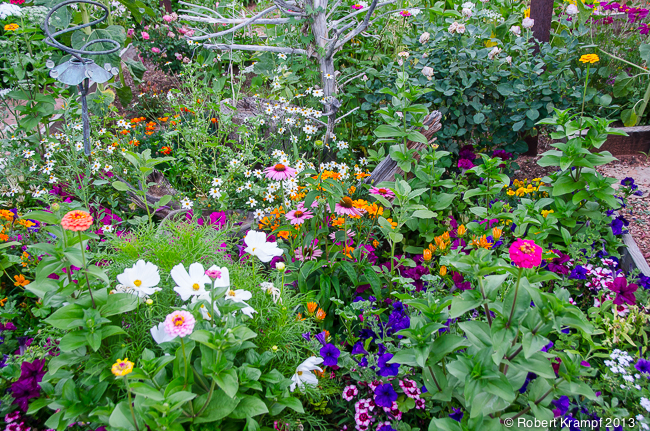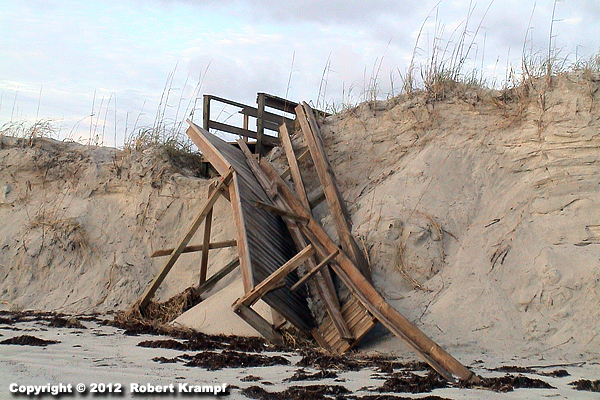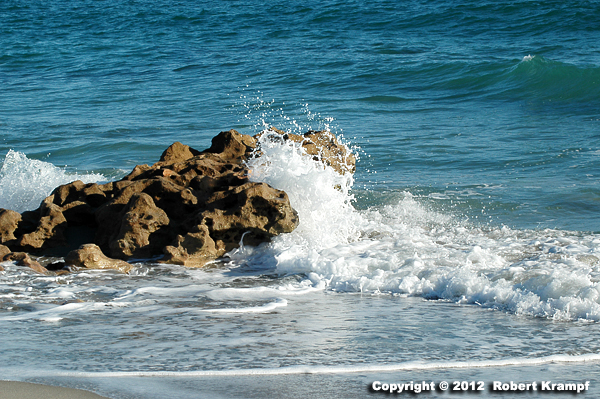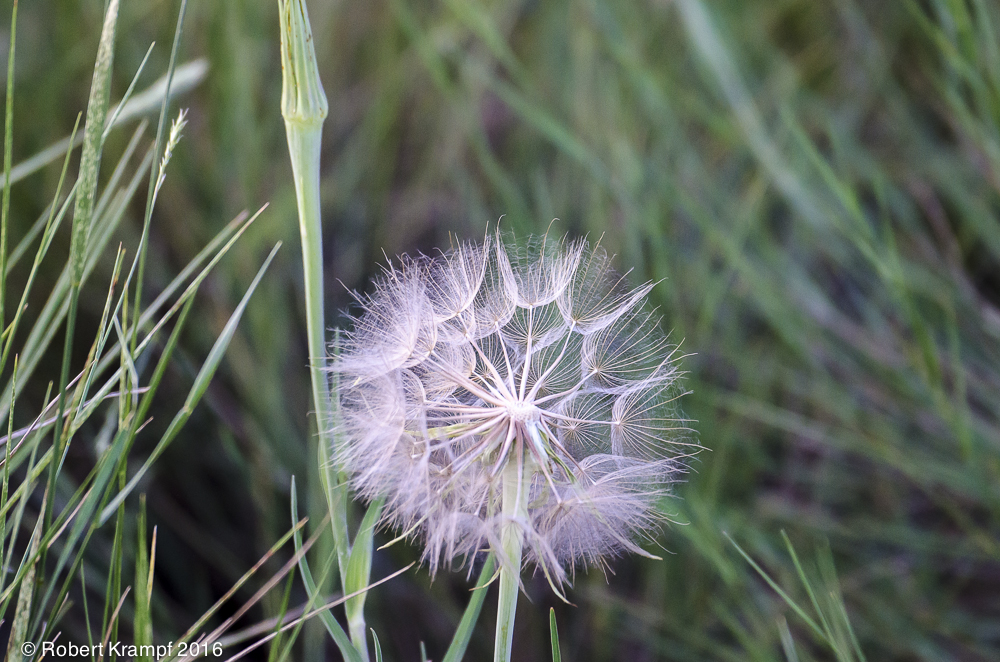Here are some science questions to help you test your general science knowledge. They will also show you which of the Florida, Utah, and NGSS science standards each question is testing.
The questions are chosen randomly, so this quest will be different each time.
Get 5 more random questions.
Would you rather see the most recently added questions?

I want to test a new fertilizer, to find the best concentration for my garden. To do this, I plan to divide my garden into four sections.
Section A. I will use 5 grams of fertilizer per gallon each time I fertilize.
Section B. I will use 10 grams of fertilizer per gallon each time I fertilize.
Section C. I will use 15 grams of fertilizer per gallon each time I fertilize.
For section D, how much fertilizer per gallon should I use?
-
20 grams of fertilizer per gallon.
No. This would be a good thing to test, but for this to be a proper science experiment, it is not the correct answer. -
30 grams of fertilizer per gallon.
No. This would be a good thing to test, but for this to be a proper science experiment, it is not the correct answer. -
1 gram of fertilizer per gallon.
No. This would be a good thing to test, but for this to be a proper science experiment, it is not the correct answer. -
No fertilizer at all.
Yes. For this type of experiment, you need to have a control group. That is a group of test subjects that you do not do anything to. If the control group with no fertilizer grows just as well as the other groups, then I would know that the fertilizer was not working.
Click to see which state standards this question tests, and which of my videos, experiments, and other resources support that topic.
Florida
SC.5.N.1.4 Identify a control group and explain its importance in an experiment.
| Bacteria and Antibiotics | video, ClosedCaptions |
| Testing a Leaf for Starch | video, ClosedCaptions |
| Review Scientific Process-1 | practice |
| Review Scientific Process-2 | practice |
| Review Scientific Process-9 | practice |
| Review Scientific Process-11 | practice |
SC.7.N.1.4 Identify test variables (independent variables) and outcome variables (dependent variables) in an experiment.
| Floating Cups | video, checked |
| Testing for Tannic Acid | video |
| Review Scientific Process-1 | practice |
| Review Scientific Process-2 | practice |
| Review Scientific Process-9 | practice |
| Review Scientific Process-11 | practice |
Utah
NGSS
3-5-ETS1-3 Plan and carry out fair tests in which variables are controlled and failure points are considered to identify aspects of a model or prototype that can be improved.
| What is Science? | video, ClosedCaptions |
| Review Scientific Process-1 | practice |
| Review Scientific Process-2 | practice |
| Review Scientific Process-7 | practice |
| Review Scientific Process-9 | practice |
| Review Scientific Process-10 | practice |
| Review Scientific Process-11 | practice |

In August of 2004, Hurricane Charley removed over six feet of sand from the beach at St. Augustine. Was that an example of erosion, weathering, both, or neither?
-
Erosion
Yes! This is an example of erosion. The sand was moved by wind and water.The term "weathering" causes confusion because it sounds like it has something to do with weather. In Earth Science, weathering means "breaking apart." Weathering breaks rocks apart. Erosion carries the pieces of rock to a different location.
-
Weathering
No. While this was caused by weather, it is not an example of weathering. Keep in mind that weathering means breaking down rocks into smaller pieces. The sand was not broken into smaller pieces. It was just moved from one place to another (erosion). -
Both erosion and weathering
No. This was erosion, but not weathering. -
Neither erosion nor weathering
No. Since the sand was moved, it was erosion.
Click to see which state standards this question tests, and which of my videos, experiments, and other resources support that topic.
Florida
SC.4.E.6.1 Identify the three categories of rocks: igneous, (formed from molten rock); sedimentary (pieces of other rocks and fossilized organisms); and metamorphic (formed from heat and pressure).
| What is a Rock? | video, learnalong, checked |
| Bioclastics: Rocks With No Minerals | video |
| Evaporites | video, learnalong, checked |
| Igneous Rocks and Bubbles | video, free, learnalong, Updated |
| Sedimentary Rocks | video, learnalong |
| Foliated and Unfoliated Rocks | text page, learnalong |
| Identifying Igneous Rocks | text page, learnalong |
| Intrusive and Extrusive Igneous Rocks | text page, learnalong |
| Light and Dark Minerals | text page, learnalong |
| Homemade Fossil Dig | text page |
| Review Rocks-1 | practice |
| Review Rocks-2 | practice |
| Review Rocks-3 | practice |
| Review Rocks-4 | practice |
| Review Rocks-5 | practice |
| Review Rocks-6 | practice |
| Review Rocks-8 | practice |
| Review Rocks-9 | practice |
| Review Rocks-7 | practice |
| Review Rocks-10 | practice |
| Review Rocks-10 | practice |
| Review Rocks-10 | practice |
SC.7.E.6.2 Identify the patterns within the rock cycle and relate them to surface events (weathering and erosion) and sub-surface events (plate tectonics and mountain building).
| Erosion | video, checked |
| Continuous Change | video, checked |
| Bioclastics: Rocks With No Minerals | video |
| Weathering and Erosion | video, learnalong, checked |
| Evaporites | video, learnalong, checked |
| What is a Rock? | video, learnalong, checked |
| The Rock Cycle | video, learnalong |
| Change: Fast and Slow | video |
| Review Rocks-1 | practice |
| Review Erosion-1 | practice |
| Review Erosion-2 | practice |
| Review Erosion-3 | practice |
| Review Erosion-4 | practice |
| Review Erosion-5 | practice |
| Review Rocks-4 | practice |
| Review Rocks-5 | practice |
| Review Rocks-6 | practice |
| Review Rocks-8 | practice |
| Review Rocks-9 | practice |
| Review Rocks-7 | practice |
| Review Rocks-10 | practice |
| Review Rocks-10 | practice |
Utah
UT.4.III.2.b Distinguish between weathering (i.e., wearing down and breaking of rock surfaces) and erosion (i.e., the movement of materials).
| Change: Fast and Slow | video |
| Erosion | video, checked |
| Weathering and Erosion | video, learnalong, checked |
| Review Erosion-4 | practice |
| Review Erosion-5 | practice |
| Review Erosion-1 | practice |
| Review Erosion-2 | practice |
| Review Erosion-3 | practice |
UT.5.II.1.a Identify the objects, processes, or forces that weather and erode Earth’s surface (e.g., ice, plants, animals, abrasion, gravity, water, wind)
| Change: Fast and Slow | video |
| Erosion | video, checked |
| Continuous Change | video, checked |
| Weathering and Erosion | video, learnalong, checked |
| Review Erosion-2 | practice |
| Review Erosion-3 | practice |
| Review Erosion-4 | practice |
| Review Erosion-5 | practice |
| Review Erosion-1 | practice |
UT.8.III.2.b Describe the role of energy in the processes that change rock materials over time.
| Continuous Change | video, checked |
| Weathering and Erosion | video, learnalong, checked |
| Igneous Rocks and Bubbles | video, free, learnalong, Updated |
| Sedimentary Rocks | video, learnalong |
| Change: Fast and Slow | video |
| Erosion | video, checked |
NGSS
4-ESS2-1 Make observations and/or measurements to provide evidence of the effects of weathering or the rate of erosion by water, ice, wind, or vegetation.
| Change: Fast and Slow | video |
| Erosion | video, checked |
| Continuous Change | video, checked |
| Weathering and Erosion | video, learnalong, checked |
| Review Erosion-2 | practice |
| Review Erosion-3 | practice |
| Review Erosion-4 | practice |
| Review Erosion-5 | practice |
| Review Erosion-1 | practice |

Are the ocean waves crashing against this rock an example of:
-
Erosion
Partially right! This is an example of erosion. Sand and bits of the rock are being moved by the waves.. -
Weathering
Partially right! This is an example of weathering too. Weathering is when a rock is broken into smaller pieces. The waves and the sand they carry are slowly grinding away these rocks. -
Both erosion and weathering
Yes! The rock is being broken into smaller pieces by the waves (weathering), and the pieces are also being carried away by the waves (erosion). -
Neither erosion nor weathering
No. Both weathering and erosion are happening here.
Click to see which state standards this question tests, and which of my videos, experiments, and other resources support that topic.
Florida
SC.4.E.6.1 Identify the three categories of rocks: igneous, (formed from molten rock); sedimentary (pieces of other rocks and fossilized organisms); and metamorphic (formed from heat and pressure).
| What is a Rock? | video, learnalong, checked |
| Bioclastics: Rocks With No Minerals | video |
| Evaporites | video, learnalong, checked |
| Igneous Rocks and Bubbles | video, free, learnalong, Updated |
| Sedimentary Rocks | video, learnalong |
| Foliated and Unfoliated Rocks | text page, learnalong |
| Identifying Igneous Rocks | text page, learnalong |
| Intrusive and Extrusive Igneous Rocks | text page, learnalong |
| Light and Dark Minerals | text page, learnalong |
| Homemade Fossil Dig | text page |
| Review Rocks-1 | practice |
| Review Rocks-2 | practice |
| Review Rocks-3 | practice |
| Review Rocks-4 | practice |
| Review Rocks-5 | practice |
| Review Rocks-6 | practice |
| Review Rocks-8 | practice |
| Review Rocks-9 | practice |
| Review Rocks-7 | practice |
| Review Rocks-10 | practice |
| Review Rocks-10 | practice |
| Review Rocks-10 | practice |
SC.7.E.6.2 Identify the patterns within the rock cycle and relate them to surface events (weathering and erosion) and sub-surface events (plate tectonics and mountain building).
| Erosion | video, checked |
| Continuous Change | video, checked |
| Bioclastics: Rocks With No Minerals | video |
| Weathering and Erosion | video, learnalong, checked |
| Evaporites | video, learnalong, checked |
| What is a Rock? | video, learnalong, checked |
| The Rock Cycle | video, learnalong |
| Change: Fast and Slow | video |
| Review Rocks-1 | practice |
| Review Erosion-1 | practice |
| Review Erosion-2 | practice |
| Review Erosion-3 | practice |
| Review Erosion-4 | practice |
| Review Erosion-5 | practice |
| Review Rocks-4 | practice |
| Review Rocks-5 | practice |
| Review Rocks-6 | practice |
| Review Rocks-8 | practice |
| Review Rocks-9 | practice |
| Review Rocks-7 | practice |
| Review Rocks-10 | practice |
| Review Rocks-10 | practice |
Utah
UT.4.III.2.b Distinguish between weathering (i.e., wearing down and breaking of rock surfaces) and erosion (i.e., the movement of materials).
| Change: Fast and Slow | video |
| Erosion | video, checked |
| Weathering and Erosion | video, learnalong, checked |
| Review Erosion-4 | practice |
| Review Erosion-5 | practice |
| Review Erosion-1 | practice |
| Review Erosion-2 | practice |
| Review Erosion-3 | practice |
UT.5.II.1.a Identify the objects, processes, or forces that weather and erode Earth’s surface (e.g., ice, plants, animals, abrasion, gravity, water, wind)
| Change: Fast and Slow | video |
| Erosion | video, checked |
| Continuous Change | video, checked |
| Weathering and Erosion | video, learnalong, checked |
| Review Erosion-2 | practice |
| Review Erosion-3 | practice |
| Review Erosion-4 | practice |
| Review Erosion-5 | practice |
| Review Erosion-1 | practice |
UT.8.III.2.b Describe the role of energy in the processes that change rock materials over time.
| Continuous Change | video, checked |
| Weathering and Erosion | video, learnalong, checked |
| Igneous Rocks and Bubbles | video, free, learnalong, Updated |
| Sedimentary Rocks | video, learnalong |
| Change: Fast and Slow | video |
| Erosion | video, checked |
NGSS
4-ESS2-1 Make observations and/or measurements to provide evidence of the effects of weathering or the rate of erosion by water, ice, wind, or vegetation.
| Change: Fast and Slow | video |
| Erosion | video, checked |
| Continuous Change | video, checked |
| Weathering and Erosion | video, learnalong, checked |
| Review Erosion-2 | practice |
| Review Erosion-3 | practice |
| Review Erosion-4 | practice |
| Review Erosion-5 | practice |
| Review Erosion-1 | practice |

The white, fluffy part of the Salsify plant is very similar to the fluffy part of a Dandelion plant. What is its function?
-
Pollinating the seeds.
No. Pollination occurs with the flower, not with the fluffy part of the seed. -
Producing the seeds.
No. The fluffy part is part of the seed. It does not produce the seed. -
Dispersing the seeds.
Yes! The fluffy part of the seed catches the wind, letting a breeze scatter the seeds over a large area. -
Germinating the seeds.
No. Germination occurs after the seed reaches the proper conditions, with soil and water.
Click to see which state standards this question tests, and which of my videos, experiments, and other resources support that topic.
Florida
SC.3.L.14.1 Describe structures in plants and their roles in food production, support, water and nutrient transport, and reproduction.
| Seed Search | video, ClosedCaptions, checked |
| Orange Slices | video, ClosedCaptions |
| Testing a Leaf for Starch | video, ClosedCaptions |
| Flowers | video, ClosedCaptions |
| Heartless Plants | video, ClosedCaptions, checked |
| Pumpkin Guts | video, free, ClosedCaptions, checked |
| Measuring Photosynthesis | video, checked |
| Smell the Flowers | text page |
| Review Plants-3 | practice |
| Review Plants-2 | practice |
| Review Plants-5 | practice |
| Review Plants-6 | practice |
| Review Plants-7 | practice |
| Review Plants-8 | practice |
SC.4.L.16.1 Identify processes of sexual reproduction in flowering plants, including pollination, fertilization (seed production), seed dispersal, and germination.
| Flowers | video, ClosedCaptions |
| Pumpkin Guts | video, free, ClosedCaptions, checked |
| Seed Search | video, ClosedCaptions, checked |
| Orange Slices | video, ClosedCaptions |
| Review Plants-2 | practice |
| Review Plants-6 | practice |
| Review Plants-7 | practice |
| Review Plants-8 | practice |
| Review Plants-3 | practice |
Utah
NGSS
2-LS2-2 Develop a simple model that mimics the function of an animal in dispersing seeds or pollinating plants.
| Pumpkin Guts | video, free, ClosedCaptions, checked |
| Seed Search | video, ClosedCaptions, checked |
| Flowers | video, ClosedCaptions |
| Review Plants-2 | practice |
MS-LS1-4 Use argument based on empirical evidence and scientific reasoning to support an explanation for how characteristic animal behaviors and specialized plant structures affect the probability of successful reproduction of animals and plants respectively.
| Pumpkin Guts | video, free, ClosedCaptions, checked |
| Seed Search | video, ClosedCaptions, checked |
| Orange Slices | video, ClosedCaptions |
| Bacteria and Antibiotics | video, ClosedCaptions |
| Flowers | video, ClosedCaptions |
| Onion Crystals | video |
| A Walk in the Park | video, checked |
| Nature Watching | video, checked |
| Calling a Woodpecker | video, checked |
| Selective Smelling | video, checked |
| Thoughts on an Exoskeleton | text page, free |
| How Does a Butterfly Fly? | text page, free |
| Review Adaptation-3 | practice |
| Review Plants-2 | practice |
| Review Plants-4 | practice |
| Review Adaptation-4 | practice |
| Review Adaptation-5 | practice |
| Review Adaptation-6 | practice |
| Review Plants-8 | practice |

This is called Marble. It was once limestone, but heat and pressure changed it, recrystallizing the calcite and distorting the layers. What kind of rock is it?.
-
Igneous
No. Igneous rocks formed from magma or lava. This is not an igneous rock. -
Sedimentary
No. Sedimentary rocks are deposited by wind, water, ice, or gravity, and they often contain fossils. When it was limestone it was a sedimentary rock, but not now. -
Metamorphic
Yes!. This marble been changed by heat and pressure from a different kind of rock. It is metamorphic. -
Marble is not a rock.
No. Marble is a naturally occurring solid that forms large layers in the Earth. Marble is a rock.
Click to see which state standards this question tests, and which of my videos, experiments, and other resources support that topic.
Florida
SC.4.E.6.1 Identify the three categories of rocks: igneous, (formed from molten rock); sedimentary (pieces of other rocks and fossilized organisms); and metamorphic (formed from heat and pressure).
| What is a Rock? | video, learnalong, checked |
| Bioclastics: Rocks With No Minerals | video |
| Evaporites | video, learnalong, checked |
| Igneous Rocks and Bubbles | video, free, learnalong, Updated |
| Sedimentary Rocks | video, learnalong |
| Foliated and Unfoliated Rocks | text page, learnalong |
| Identifying Igneous Rocks | text page, learnalong |
| Intrusive and Extrusive Igneous Rocks | text page, learnalong |
| Light and Dark Minerals | text page, learnalong |
| Homemade Fossil Dig | text page |
| Review Rocks-1 | practice |
| Review Rocks-2 | practice |
| Review Rocks-3 | practice |
| Review Rocks-4 | practice |
| Review Rocks-5 | practice |
| Review Rocks-6 | practice |
| Review Rocks-8 | practice |
| Review Rocks-9 | practice |
| Review Rocks-7 | practice |
| Review Rocks-10 | practice |
| Review Rocks-10 | practice |
| Review Rocks-10 | practice |
SC.7.E.6.2 Identify the patterns within the rock cycle and relate them to surface events (weathering and erosion) and sub-surface events (plate tectonics and mountain building).
| Erosion | video, checked |
| Continuous Change | video, checked |
| Bioclastics: Rocks With No Minerals | video |
| Weathering and Erosion | video, learnalong, checked |
| Evaporites | video, learnalong, checked |
| What is a Rock? | video, learnalong, checked |
| The Rock Cycle | video, learnalong |
| Change: Fast and Slow | video |
| Review Rocks-1 | practice |
| Review Erosion-1 | practice |
| Review Erosion-2 | practice |
| Review Erosion-3 | practice |
| Review Erosion-4 | practice |
| Review Erosion-5 | practice |
| Review Rocks-4 | practice |
| Review Rocks-5 | practice |
| Review Rocks-6 | practice |
| Review Rocks-8 | practice |
| Review Rocks-9 | practice |
| Review Rocks-7 | practice |
| Review Rocks-10 | practice |
| Review Rocks-10 | practice |
Utah
UT.4.III.1.a Describe the differences between minerals and rocks.
| Definition of a Mineral | video, checked |
| What is a Mineral? | video, checked |
| Identifying Minerals | video, learnalong |
| What is a Rock? | video, learnalong, checked |
| Bioclastics: Rocks With No Minerals | video |
| Review Rocks-4 | practice |
| Review Rocks-5 | practice |
| Review Rocks-6 | practice |
| Review Rocks-8 | practice |
| Review Rocks-9 | practice |
| Review Rocks-7 | practice |
| Review Rocks-10 | practice |
| Review Rocks-1 | practice |
NGSS
4-ESS1-1 Identify evidence from patterns in rock formations and fossils in rock layers to support an explanation for changes in a landscape over time.
| Reading the Rocks: Law of Superposition | video |
| Reading the Rocks: Law of Crosscutting | video |
| What is a Rock? | video, learnalong, checked |
| Reading the Rocks: The Present is the Key to the Past | video, ClosedCaptions |
| Paleo Cookies | video |
| Evaporites | video, learnalong, checked |
| Igneous Rocks and Bubbles | video, free, learnalong, Updated |
| Sedimentary Rocks | video, learnalong |
| Homemade Fossil Dig | text page |
| Review Rocks-1 | practice |
| Review Geologic Time-1 | practice |
| Review Rocks-4 | practice |
| Review Geologic Time-2 | practice |
| Review Rocks-5 | practice |
| Review Rocks-6 | practice |
| Review Rocks-8 | practice |
| Review Rocks-9 | practice |
| Review Rocks-7 | practice |
| Review Rocks-10 | practice |
| Review Geologic Time-3 | practice |
MS-ESS2-1 Develop a model to describe the cycling of Earth’s materials and the flow of energy that drives this process.
| Identifying Minerals | video, learnalong |
| Sedimentary Rocks | video, learnalong |
| What is a Rock? | video, learnalong, checked |
| The Rock Cycle | video, learnalong |
| Bioclastics: Rocks With No Minerals | video |
| Evaporites | video, learnalong, checked |
| Definition of a Mineral | video, checked |
| Igneous Rocks and Bubbles | video, free, learnalong, Updated |
| What is a Mineral? | video, checked |
| Light and Dark Minerals | text page, learnalong |
| Review Rocks-1 | practice |
| Review Rocks-2 | practice |
| Review Rocks-3 | practice |
| Review Rocks-4 | practice |
| Review Rocks-5 | practice |
| Review Rocks-6 | practice |
| Review Rocks-8 | practice |
| Review Rocks-9 | practice |
| Review Rocks-7 | practice |
| Review Rocks-10 | practice |
| Review Rocks-10 | practice |
| Review Rocks-10 | practice |
The questions are chosen randomly, so this quest will be different each time.
